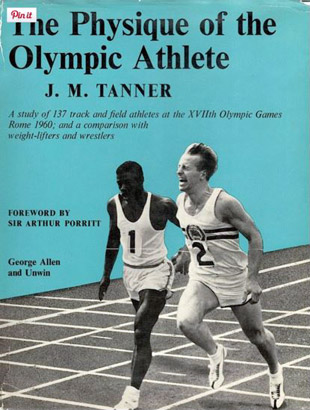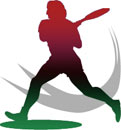The 1960 Rome Olympic Games organising committee engaged in a project which attempted to gather physiological and anthropometrical data about Olympic competitors. Prior to the games, colour-coded cards (yellow for men and blue for women) were sent to each National Committee, with instructions to have them filled with 'basic bio-psychical' information.
The cards were described as having sections such as: personal, genealogical, general amnestic, clinical, anthropometric, biochemical, amnestic sports, psycho-physiological. Unfortunately, there was a disappointing response to this request, which was put down to due to the last minute selection of teams, athletes located away and some problems with the translation of the cards.
Undeterred, a team of investigators was set up in Rome to gather the data. The research team was set up in the Medical Services Building in the Olympic Village. Dr Rossi and Dr Marchi from the Institute of Physiology of Milan University did basic ergometric research. Four investigators of London University carried out anthropometric determinations. Prof. Correnti of Palermo University, in collaboration with Dr. Greco, carried out further anthropometric determinations. Professors Venerando and Masini from the Rome University, together with Doctors Rulli, Liberati, and Guerra carried out cardiologic research and control using an X-ray unit provided by the Ministry of Health and a mobile electrocardiographic unit provided by the firm of Battaglia and Rangoni of Bologna.
 cover of Physique of the Olympic Athlete by J.M. Tanner
cover of Physique of the Olympic Athlete by J.M. TannerSystematic data was finally gathered from around 2000 athletes, nearly half of the total competitors at the games, plus basic data was obtained for almost all athletes, such as place and date of birth, height, weight, profession, and athletic achievement.
Bibliography
- Book published: Physique of the Olympic Athlete; A Study of 137 Track and Field Athletes at the XVIIth Olympic Games, Rome 1960; and a Comparison with Weight-Lifters and Wrestlers by J. M. Tanner. - used skinfold measures and analysed limb segment tissues from radiographs for body composition measurement
- Correnti, V. e B. Zauli. Olimpionici 1960: Ricerche di Antropologia Morfologica sull'Atletica Leggera (Researches on Morphological Anthropology on Athletics) - used skinfold measures for body composition measurement
Related Pages
- Anthropometry at the Olympics
- Sport Specific Anthropometry
- Science and the Olympics
- Olympics Anthropology Days
- about the 1960 Rome Olympics


 Current Events
Current Events